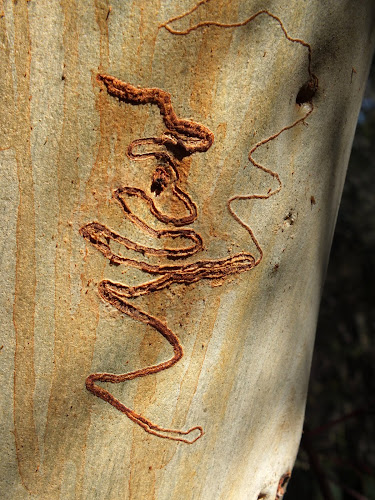Cumberland Plain Woodlands
.
Scientists generally recognise the 'Cumberland Plain Woodlands' to represent those distinct groupings of woodlands dominated by trees of Eucalyptus moluccana,(Grey Box), Eucalyptus tereticornis (Forest Red Gum) and in some areas Eucalyptus crebra (Narrow-leaved Ironbark).
Summary of the nomination
The nomination of 'Cumberland Plain Woodlands' is for Schedule 2, ie, 'Ecological Communities that are Endangered'. The nomination provided a summary of information about the ecological community and evidence about the conservation status of the ecological community type. This community type was once widespread in the Cumberland Plains region west of Sydney NSW but has been reduced to a few fragmented stands by human use of this land for farming, industry and housing. The nomination states that the remaining stands of this ecological community are threatened by the spread of the Sydney suburban areas.
Statement with regard to the Endangered Species Protection Regulations
This nomination has been assessed by officers of the Threatened Species and Communities Section, Biodiversity Group, Environment Australia. ESSS has been advised that the information supplied with the nomination meets all the requirements specified by regulation.
Description of the range and status of the ecological community
The Cumberland Plain Woodlands is the accepted name for the plant community that occurs on soils derived from shale on the Cumberland Plain.

The Cumberland Plain Woodlands ecological community is characteristically of woodland structure but may include both more open and more dense areas, and the canopy is dominated by species including one or more of the following: Eucalyptus moluccana, Eucalyptus tereticornis, Eucalyptus crebra, Eucalyptus eugenioides and Eucalyptus maculata. The understorey is generally grassy to herbaceous with patches of shrubs, or if disturbed, contains components of the indigenous native species sufficient to re-establish the characteristic native understorey. The Cumberland Plains Woodlands ecological community includes regrowth that is likely to achieve a near natural structure or is a seral stage towards that structure.
The following assemblage of grass, forb and sub-shrub species characterises the understorey of the Cumberland
Plain Woodlands ecological community:
Aristida ramosa, Aristida vagans, Arthropodium milleflorum, Chloris truncata, Chloris ventricosa, Commelina cyanea, Cyperus gracilis, Dianella revoluta, Dichelachne micrantha, Echinopogon caespitosus, Echinopogon ovatus, Entolasia marginata, Eragrostis leptostachya, Hypoxis hygrometrica, Lepidosperma laterale, Lomandra filiformis, Lomandra multiflora, Microlaena stipoides, Oplismenus aemulus, Panicum simile, Themeda australis, Tricoryne elatior, Asperula conferta, Brunoniella australis, Dichondra repens, Glycine cladestina, Glycine tabacina, Goodenia hederacea, Hardenbergia violacea, Hibbertia diffusa, Hypericum gramineum, Lissanthe strigosa, Oxalis exilis, Phyllanthus filicaulis, Pratia purpurascens, Solanum pungetium, Vernonia cinerea and Wahlenbergia gracilis. The characteristic taller shrub assemblage is: Acacia decurrens, Acacia falcata, Acacia implexa, Acacia parramattensis, Bursaria spinosa, Daviesia ulicifolia, Dillwynia sieberi, Exocarpos cupressiformis, Indigofera australis, Melaleuca decora and Eremophila debilis. The following assemblage characterises the tree canopy: Eucalyptus crebra, Eucalyptus eugenioides, Eucalyptus fibrosa, Eucalyptus maculata, Eucalyptus moluccana and Eucalyptus tereticornis.Not all species listed as characteristic of the assemblage occur in every single stand of the community. Also, the total list of plant species that occurs in the community is much larger than the characteristic assemblage, with many species occurring in one or a few sites, or in very low abundance. A detailed description of the ecological community is provided in Benson D. (1992). The natural vegetation of Penrith. Cunninghamia 2(4): 541-596.
The distribution of Cumberland Plain Woodlands in the County of Cumberland in 1788 was approximately 107,000 hectares. Only 6% (6,420 hectares) of the original community remained in 1988 in the form of small fragmented stands. Although some areas occur within conservation reserves, this is in itself not sufficient to ensure the long-term survival of the community unless the factors threatening the integrity and survival of the community are ameliorated.
Threats to the community include clearance for agriculture, grazing, hobby and poultry farming, housing and other developments, invasion by exotic plants and increased nutrient loads due to fertiliser run-off from gardens or farmland, dumped refuse or sewer discharge.
How judged by ESSS in regard to the ESP Act criteria
It is the view of ESSS that the ecological community known as 'Cumberland Plain Woodlands' is subject to current and continuing threats likely to lead to extinction as demonstrated by the following two of the four criteria for an ecological community provided in the document 'Listing Endangered Ecological Communities under the Endangered species Protection Act 1992: Guidelines for Nomination and Assessment of Proposals':
a) marked decrease in geographic distribution (to 6% of the original community), and
d) restricted geographic distribution such that the community could be lost rapidly by the action of a threatening process (such as clearance for farming, industry and housing).
ESSS judges that this ecological community meets the criteria for endangered under s6. (3) for the following reasons:
it is likely to become extinct in nature unless less the circumstances and factors affecting its abundance, survival or evolutionary development cease to operate.
Recommendation
'Cumberland Plain Woodlands', should be listed under 'Schedule 2 Listed Ecological Communities' of the Endangered Species Protection Act 1992.